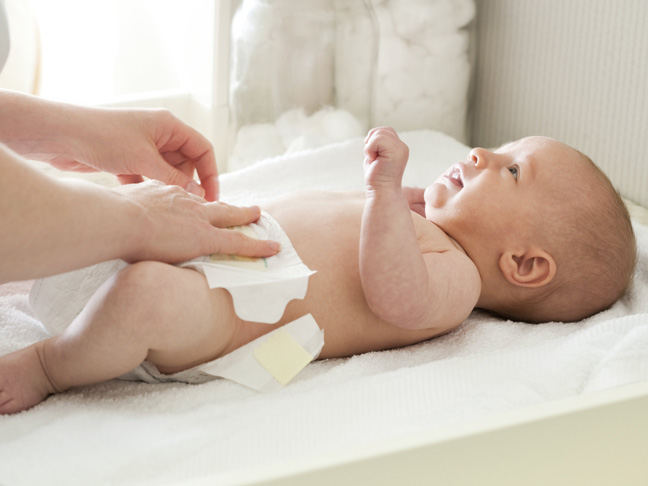At some point, you’ve probably googled all the ways to treat your baby’s diaper rash. You may have a good idea of what causes it as well…or at least, you may think you do (I know I did). My twins didn’t start getting teeth until they were almost one, and when those little chompers came in, they would get horrible diarrhea, which was then followed by angry, red diaper rash. With one, came the other. Of course, pediatricians have differing opinions on whether teething can indirectly cause diaper rash but, in our case, it definitely seemed to be the culprit.
See, sometimes your baby’s irritated bum can stem from something you might not have even realized. Sure, if you left her in a soiled diaper for too long, you know exactly what went wrong. Other factors, however, are a lot more unexpected, like these:
1. Her diapers don’t fit correctly. As you may have noticed, babies grow fast, busting out of their diapers right after you bought another month’s supply of size 2s. So your baby’s diapers may no longer be fitting right. According to the Mayo Clinic, when a diaper is too tight, it not only rubs and chafes the skin, but it restricts air flow, trapping moisture in. That dampness is exactly what creates diaper rash. If you notice any redness around her thighs and waist, your baby’s diaper is probably too small and it’s time for a size upgrade — yes, even if her weight seems in line with the recommendations on the package.
2. He’s allergic to an ingredient in his diapers or wipes. Some babies have very sensitive skin which reacts easily to certain materials and products, like the absorbent gel, dyes, and fragrance found in some diapers and wipes. Of course, every baby is different, so while one can’t wear generic-brand diapers, it might be the only kind that another can tolerate, explains Gregg Alexander, MD, a pediatrician in private practice in New York City. Even if you think you bought the greenest, safest, cleanest diapers on the planet, if your baby is prone to diaper rash, you may need to run some trial-and-error with other brands.
3. You’ve been using plastic diaper covers. If your baby is prone to blowouts, you may sometimes use these covers to protect her adorable outfits. Unfortunately though, they warm the diaper area, and trap moisture, making her more prone to rash. So, as much as you want to preserve those cute white bloomers, you may need to retire the plastic covers.
4. You towel-dry your baby’s rear. When taking your baby out of the tub, try not to rub his bottom with the towel. The rough texture can irritate his sensitive skin, and make it more susceptible to bacteria. Gently pat him dry instead.
5. You’ve recently introduced solid foods. Yes, food is a treat for your baby, but it’s also a little bit of a shock to her system. As she begins to eat solids, her poop is going to change in consistency, as well as frequency, and that can lead to diaper rash. “The changing diet changes the colonization of bacteria, and when that stool sits against the skin, it can cause redness and irritation,” explains Wendy Sue Swanson, MD, MBE, FAAP, a Seattle-based pediatrician and author of Mama Doc Medicine. That said, sometimes diaper rash can indicate a food sensitivity, intolerance, or even allergy, so if your baby has hives, or the rash doesn’t improve in a few days, have it checked out by your pediatrician.
6. The foods he’s eating are acidic. Some foods, whether ingested by the baby, or transferred to him through breast milk, can be a little rough on his system, especially acidic foods like citrus and tomato. If you notice a red ring around your baby’s anus, you’ll want to cool it on the oranges and marinara sauce, or cut out the acidic foods completely.
7. Your baby is taking antibiotics. The meds fighting her ear infection might be causing a new problem: a flare-up of diaper rash. “Antibiotics create an environment that allows yeast to flourish, which can lead to rash and infection,” explains Dr. Alexander. Of course, if your baby needs antibiotics, you’re going to give them to her, but you might begin to see diaper rash soon after. Sometimes probiotics can replace the “good bacteria” in your baby’s gut, helping get her tummy back to normal. If your baby’s developed an infection though, an anti-fungal cream — along with frequent diaper-changes and lots of fresh air on her bare buns — will speed up her recovery, adds Dr. Swanson.
For further reading take a look at our list of the best and most trusted diaper rash creams here.
Photo: Getty








